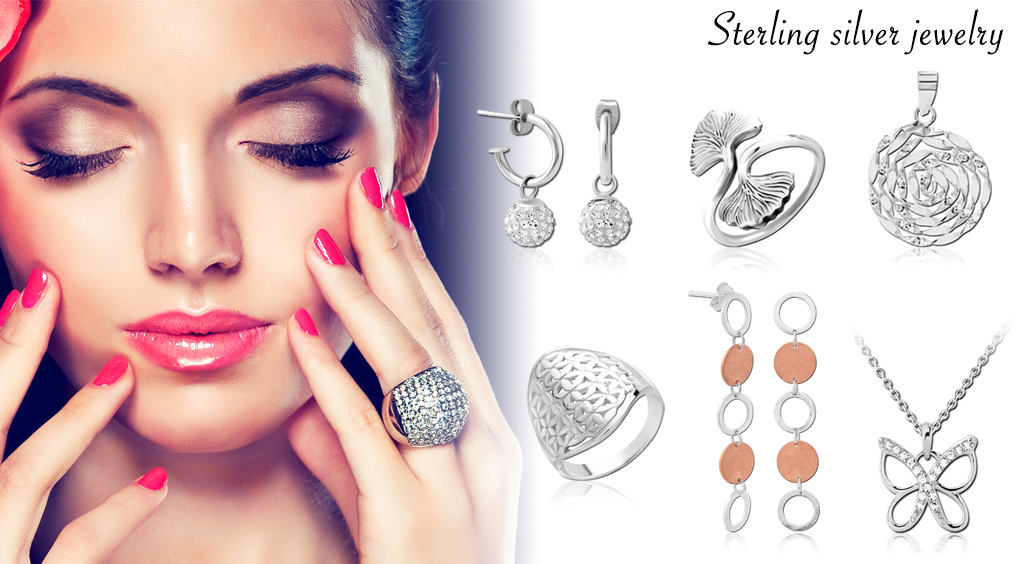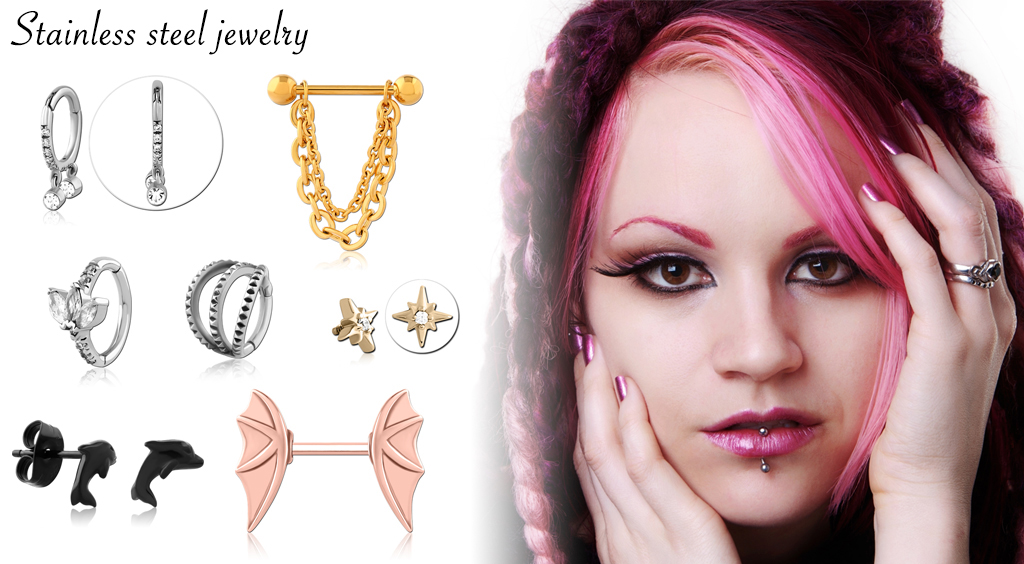
6
Jul
Which Is Better Sterling Silver or Stainless Steel?
0
0
0
While on first blush sterling silver and stainless steel may look similar, they are ultimately very different materials. When it comes to jewelry, their method of production, typical usage, lifespan, and properties of both vary quite differently. This makes answering the question “Which is better, sterling silver or stainless steel” a question only you can answer.
Ultimately, whether you choose silver or steel comes down to personal preference, your lifestyle, and how your individual needs from a piece of jewelry. For most people, stainless steel is a more suitable material when it comes to body piercings. But, to understand why and to help you decide which material is best for you, we will dive into the topic a little deeper below.
Sterling silver jewelry

- Precious metal
- Highly malleable
- Attractive and lightweight
- Tarnishes, dents, and scratches easily
- More expensive
Both sterling silver and stainless steel are alloys with the former comprised of 92.5% silver with 7.5% copper or other metal. This is indicated by “925” being stamped somewhere upon the body of the jewelry piece.
As a soft metal, silver has copper added to it to increase its durability and hardness. Despite this, it is still highly malleable and can be bent by hand with some force. While this is sometimes seen as a disadvantage of the metal, it can also be a benefit. This malleability allows it to be reshaped and crafted into ever more elegant and intricate pieces of jewelry and body pieces.
While its lightweight, soft makeup makes it great for making jewelry, sterling silver does tend to tarnish over time. This is exacerbated by humidity and moisture, including the oils and sweat that our skin produces. In some extreme cases, trace amounts of nickel and other metals are also found within sterling silver which can cause an allergic reaction in some people. While this is typically quite mild when on the surface of the skin, within a pierced body part, the reaction can be somewhat more severe.
For this reason, silver is most suitable as jewelry for non-pierced purposes. For example, as a pendant, bracelet, ring, or necklace.
Verdict: Sterling silver is a beautiful, soft precious metal more suited for external jewelry such as necklaces, rings, and charms. Silver is ideal for use on special occasions rather than everyday use.
Stainless steel jewelry

- Strong and durable
- Resembles silver
- Inexpensive
- Difficult to adjust and repair
- Not a precious metal and won’t appreciate in value
Stainless steel can be found in a wide variety of compositions. While there are 150 grades of stainless steel available, only 15 or so are commonly used and all tend to feature a minimum of around 10.5% chromium as part of their makeup as well as iron.
While not considered a precious metal, stainless steel does feature many of the properties of silver as well as some added benefits. Just like sterling silver, stainless steel can be forged into a variety of different shapes, making it suitable for many jewelry purposes and has an appealing, shiny surface that reflects light well. Mixed with other metals and treated differently, it can also be made to resemble metals such as rose gold.
One of the key benefits of stainless steel over sterling silver is that it costs a lot less to manufacture. As it is not comprised of a scarce asset, instead of being an iron alloy, stainless steel typically costs a fraction of the cost of silver pieces, without sacrificing the look of the piece. While this does mean your jewelry piece is unlikely to appreciate in value, it allows people to experience the look and feel of silver without spending as much money.
Retailers looking for a wholesale supplier of stainless steel jewelry should visit Salamander Jewelry’s online store and see just what is possible with the material.
Stainless steel pieces are also more durable than silver jewelry without tarnishing. Stainless steel is corrosion resistant meaning it has found usage in all manner of industries and sectors, not just jewelry. Its ability to remain strong, tough, and durable once formed into shape makes it great for jewelry as well as for construction purposes and manufacturing. Stainless steel is therefore ideal for body piercing jewelry, especially.
This toughness can make it difficult to adjust the size of stainless steel pieces, however with the reworking of the jewelry often requires industrial tools that make it infeasible in most cases.
Verdict: Stainless steel is a low-cost, tough alternative to sterling silver that is great for all purposes including body piercing jewelry, as well as rings, pendants, charms, and necklaces. It is more suited for everyday use than silver.
Takeaway
Both sterling silver and stainless steel offer the chance to wear beautiful jewelry. Which material you choose should depend on whether you will be wearing the jewelry daily and how likely the piece is to be damaged. If you are looking to invest in jewelry that will appreciate in value, to leave as an heirloom or as a gift, silver is the ideal choice. If you want a functional piece that can withstand the demands of everyday life while still looking good, stainless steel is a great alternative.
For wholesale high-quality stainless steel and silver jewelry visit Salamander Jewelry’s online store now. With nearly 25 years of experience supplying the jewelry industry with certified, beautiful pieces at the best prices. We have a low minimum order amount of just $100 with a scaling discount on bulk orders.